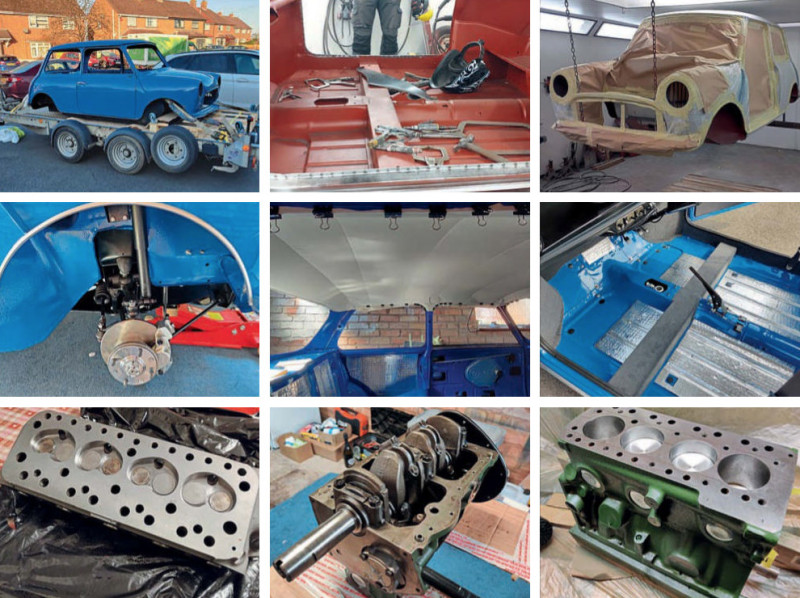Modified 1975 Mk3 Mini 1000
What sort of Mini does a contemporary car design professional love best? His first Mini, of course… but Paul Marsh had a clear idea of what looks good and what doesn’t when it came to building his own dream Mini.
What sort of Mini does a contemporary car design professional love best? His first Mini, of course… but Paul Marsh had a clear idea of what looks good and what doesn’t when it came to building his own dream Mini.
Words: Monty Watkins
Photos: Simon Cooke
THE SAME BUT DIFFERENT
Immaculate rebuild with performance engine.
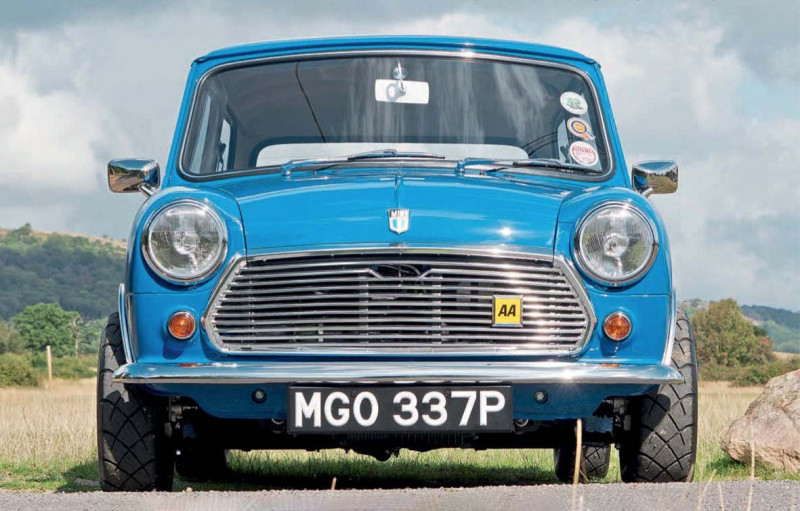
Paul has an eye for a good shape. He spends his working days as a claymodeller, shaping top secret vehicles of the future. “I work for Jaguar Land Rover within the Design Studio. I predominantly work on exterior and interior models for Land Rover from concept through to realisation.” He’s probably not allowed to say any more than that unless we all sign the Official Secrets Act.
«I love the 1970s Mk3 Mini looks: no wheel arches with the Deluxe trim.» 10«wheels for a correct look.»
The basic Mini saloon ticks the right boxes for him and perhaps his first car, a 1977 (Mk4) Mini saloon bought in 2004, might have set him thinking about design as Mini has done to so many others.
Rather than wait for his retirement years before recreating his much-loved first car, he has managed to do it only a few years down the line. Lockdown, and owning a single garage, provided just enough temptation to reimagine his much-loved first Mini but with a budget rather better than he had as a youth. After all, Jane Austen would have got it totally right if she had ever said: “It is a truth universally acknowledged that a man, in possession of a single garage and a good fortune, must be in want of a Mini resto”. After all, a garage without a resto project is a sad and wasted space.
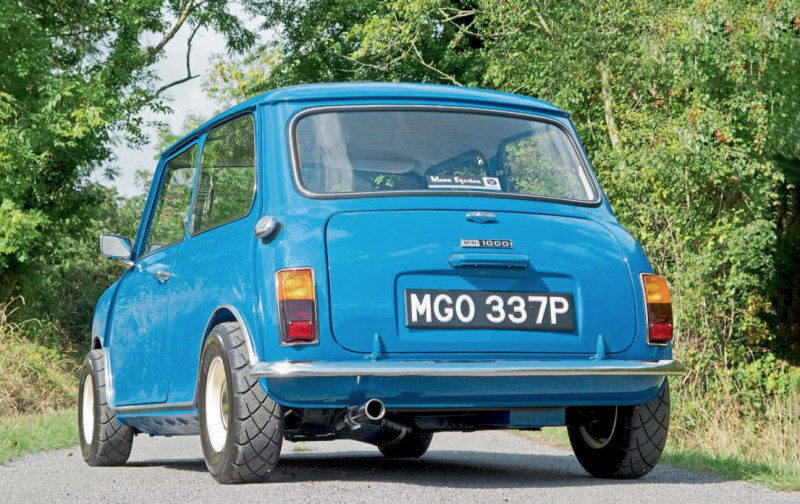
Paul knew what he wanted this time round: “To do a concours restoration and keep as much originality as possible with a few nice upgrades. I had a 998cc Mini previously, when I was 17 years old, my first car. Now, 19 years later, I wanted something very similar to rekindle my youth. I am aiming for around 55 to 60bhp, just slightly more than 998 Cooper power. My previous Mini was a 998cc A+ block, 12G295 head, 266 cam, small-bore LCB and single HS4. It was a very different vehicle to what this car has become. It was a daily driver and I used to drive home to Worcester from Leicester on the weekends from university in it.”
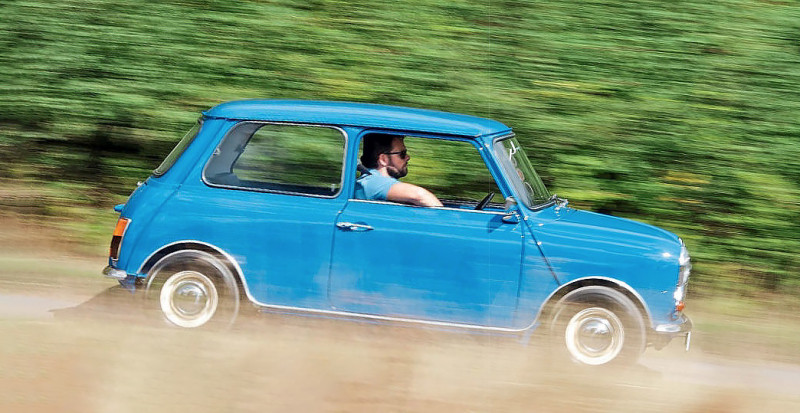
When it came to choosing the best Mini for his build he happened upon a 1975 Mk3 Mini saloon, offered by an enthusiast in Surrey, in July 2020. Mk3 (1969-1976 in the UK) was perhaps the ultimate evolution of the ‘driver’s’ Mini as it was the last type to retain the solid-mounted front subframe, 10” wheels and had a host of civilised safety and mod cons not previously available to Mk1 and Mk2 owners. Sadly, Leyland cornercutting robbed it of its true potential and alienated a lot of passionate fans. The Mk4-onwards evolutions got the quieter, rubber-mounted front subframe, and eventually the larger wheels, that robbed the Mini of its innate agility.
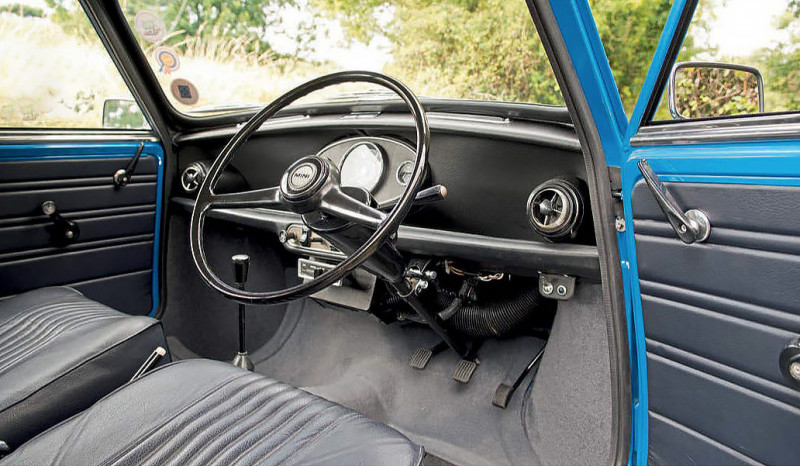
Paul drove his Mk3 for three months before taking it into his garage and dismantling it from October 2020. «As Minis go. it was a decent shell; floors and heel board were all solid. It did have the usual front-end rust around the lamps and A-panels. although more was found when the shell was blasted. The car was fairly original except for some patent part-door skins and a rear valance which had been stuck on over the existing rusted valance; a bodge. I could see what needed doing from the outside but only when it came back from blasting did it highlight the additional panels the car would require. Additional parts which I hadn’t accounted for were the inner door steps, scuttle panel, some floor repairs, rear valance and a new bonnet.»
The shell was sent to Kevin and Ian, at L&L Bodyworks of Stoke-on-Trent, whose excellent Minis have appeared in MiniWorld. «Kevin and Ian Initially cut off any panels which were going to be replaced. No point blasting panels which are going in the bin so the front panel, scuttle, wings, door skins, outer sills etc. were all cut off. Then the shell went for blasting.» The UK Mk3 was pretty vulnerable to rust so we think that Paul was rather lucky that his at least had a good ‘centre section’. All too often, the whole front end and the lower 25-30% of the rest of the shell have to be replaced. Thankfully that procedure is well known to Mini restorers and is still way cheaper than the equivalent work on most other classics.
While all that was going on. there was plenty of room In the single garage to assess and recondition the remaining parts, including the whole drive train. One particularly good weapon in Paul’s arsenal was his dad. Richard. It meant that they could do an engine build together and decide the right spec, for the job. «My dad has helped massively with the engine build-up and set-up and I genuinely couldn’t have done the engine without him. He has built up many A-series engines, between Minis and Metros, and has owned many himself over his lifetime.»
With an eye on the spec, of his old 1977 Sandglow Mini’s engine, they wrote up a list of engine parts to be sourced from an A-list of suppliers and the specifications are listed in our Tech Spec below. Cal ver ST, AC Dodd, MED, Maniflow… they’re all there. The original engine was pretty good so why was it bored +0.060” to 1046cc? “The reason I went with +0.060” was on recommendation as a safe overbore on a 998cc and it would also allow for the larger inlet valves on the modified CST2005 head without the need to pocket the block.” All the block machining was done locally by MJA Engineering, known as engine people for Car SOS on the telly.
It has yet to be set up on a dyno but Paul and Richard were confident that they knew the right approach, having done the previous engine themselves. “Dad and I had a pretty good idea of the carb needle and spring required to get the car running initially. The car is running an HS4 with an AO swing needle.
You can’t buy an AO swing needle as these were always the fixed type. We had to create an AO needle with a swing needle top cap. We tried an AAA needle but found it to be far too rich and moved to a modified AO needle and a blue spring. It idles lovely and pulls well with no flat spots. Our set-up is a great start but, to get the fuelling absolutely perfect, it will require a dyno set-up. Static tuning will only take you so far.”
The transmission went to Paul Jeffries. “He is a well-known A-series engine and gearbox builder in the Mini scene in the West Midlands area. He has helped out countless Mini enthusiasts and owners. The gearbox worked fine but it would have been an oversight to not recondition it whilst the engine was getting stripped down. I didn’t want to put a pristine head and block onto an old, dirty gearbox. Alongside the reconditioning components, Paul also fitted a central oil pick-up pipe.”
L&L only needed the bodyshell for four weeks, despite the rather long list of British Motor Heritage panels that they had to fit, so Paul did not have long to get other parts ready for reassembly. His job was greatly simplified by sticking to a standard spec. interior and retaining most of the showroomMk3 look outside. “I love the 1970s MK3 Mini looks: no wheel arches with the Deluxe chrome trim. Minis were never originally designed to have wheel arch extensions so I like it that way.”
Using ‘drum offset’ JBW steel reverse rim 4.5x10 wheels with race-inspired Yoko A032R tyres is the biggest visual cue that there’s more to this Mk3 than meets the eye. The width was a very popular Mini fashion statement back in the day. “I initially had the exact same set-up on my previous 998 Mini until I fitted some 6x10 Revolites. I wanted a more standard ‘OEM+’ look on this Mini, hence the reverse rims. The handling is unreal, due to the wider track, and steering is nice and easy with the original 70s steering wheel. I love the look of the steering wheel too. I do have an itch for some 10” Rose Petals as I think these really suit the Mk3 Mini; maybe an upgrade is on the cards for this year. For me a Mini has to have 10” wheels for the correct look. I’ve never been a big fan of 12s or 13s.”
It was back on the road by August 2022 and has not failed to please. It will appeal to a lot of Mini fans as it has a sophisticated upgrade for the evergreen 998cc engine so it will perform significantly better than standard while looking near-standard. Since getting it on the road, he has been experimenting with the S/GT front disc brakes. It appears to work fine with the drum/early Cooper size master cylinder but some lessons have been learned. “The brakes work really well. I would say pick the correct pads as some are so poor and don’t have the bite required. After swapping to EBC Greenstuff pads I am really impressed with how well they stop, even from cold.”
Would he restore another Mini after this experience? “I’d love to but it takes a lot of time, patience and money to get a Mini to this level of finish and I seem to be always adding more improvements to this car. It’s never completely finished. If I were to do another Mini I’d like to do a Pick-up or Van. All I would say to any potential Mini restorer is think about what level of finish you want to achieve before taking on a project like this. Minis and their parts are not cheap any more and the costs can spiral quickly.” Well that’s not exactly a ‘no’. He believes that this project came in at about Åí21k including the purchase of the Mk3. “As the project was done over a two-year period, the cost was spread out and things were paid for as and when they were needed.”
The Mini was a project that involved his dad Richard and he also got help and support from his wife and two daughters. We think that he has created a really desirable, mainstream Mini that will remind others just how good the misunderstood Mk3 generation was.
Paul Marsh would like to thank: “My wife Mandip and my daughters for the patience and support throughout the last two years as I have been slightly obsessed; my dad Richard for his technical knowledge and help building the engine and getting the car running; Paul Jeffries for his knowledge and gearbox rebuild skills and L&L Bodyworks, who were a great help.”
TECHNICAL SPECIFICATION Modified 1975 Mk3 Mini 1000
- Engine: 998 A-series bored +0.060” to 1046cc by MJA Engineering block skimmed MED billet oil filter housing braided oil feed hose Calver ST 2005 St3 Super Sport head 31.75 mm inlets, 27.18mm exhausts, single-groove collets, manganese bronze guides, A+ stem seals (Viton on inlets), double valve springs, Reinz AF070 head gasket AC Dodd A+ calibrated, sintered rockers Maniflow mild steel small-bore LCB exhaust manifold, Maniflow mild steel 1.” single-box, side-exit system. Kent 266 A+ slot-drive cam, Vernier duplex timing assembly, MAR Motorsport race cam followers .OE crank reground by MJA Engineering .Mini Spares alloy water-heated inlet manifold reconditioned single SU HS4 carb, blue spring, converted to swing needle (AO) OE air filter housing, K&N replacement element Mini Spares two-core radiator .OE 11-blade-mechanical fan Aldon Yellow 45D distributor (fast road curve) .Mini Sport sports coil .NGKBP6ES plugs 8mm silicone HT leads 70A alternator (negative earth) new Mini Spares wiring loom. assembly by Paul and Richard Marsh .
- Gearbox: Mini manual four-speed, four-synchro gearbox prepared by Paul Jeffries rod shift 3.44:1 final drive ratio single-pin differential OE gearset centre oil pick-up pipe Borg and Beck diaphragm clutch OE Lockheed hydraulic clutch slave cylinder copper pipe braided hose
- Brakes: single-circuit OE non-servo system. Lockheed Mini master cylinder front S-spec. 7.5” solid discs, twin-pot calipers, EBC Greenstuff pads rear spacer drums
- Suspension: OE Moulton dry rubber-cone suspension reconditioned front subframe, new British Motor Heritage rear subframe, both powder-coated satin black KYB nonadjustable dampers .Hi-Los new rubber springs steering rack reconditioned suspension arms powder-coated
- Wheels/Tyres: JBW4.5”x10” steel reverse rims, white chrome S/Van/Basic wheel trims Yokohama A032R tyres 165/70x10 Interior: OE Mk3 saloon black-trimmed open dash three-clock centre oval pod eyeball vents top rail, A-pillars trimmed as Cooper S Mk3, incl. chrome ashtray OE steering wheel new Newton Commercial white headlining, C-pillar trims sun visors painted new white-housing rear view mirror OE Mk3 seats, trim panels in Navy OE Kangol Mk3 front seatbelts, none in rear optional OE heated rear screen, switch
- Exterior: OE 1975 Mk3 BL Mini round-nose saloon bodyshell shellmedia-blasted Heritage replacement panels: bonnet, wings, A-panels, front panel, scuttle, door skins, outer sills, sill steps, rear valance paint code BLVC 65 Tahiti Blue in two-pack solid colour, stonechip Bilt Hamber Dynax S50 in cavities Mk3 chrome plastic seam trim. plain bumpers external release grille upgraded Wipac H4 halogen headlamps, integral sidelights new-old-stock OE Lucas rear light lenses OE Tex Mk3 chromed door-mirrors chrome filler cap body resto by L&L Bodyworks (Stoke-on-Trent)
For me a Mini has to have 10«wheels for a correct look 998cc A-series engine has been rebuilt and bored 0.060» to 1046cc.
THE BUILD
